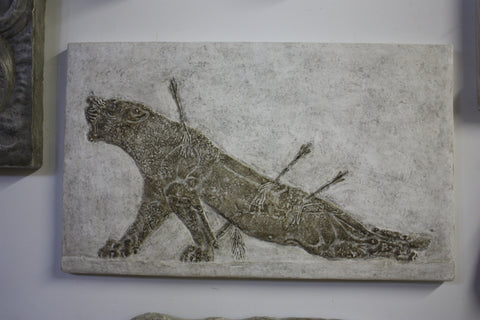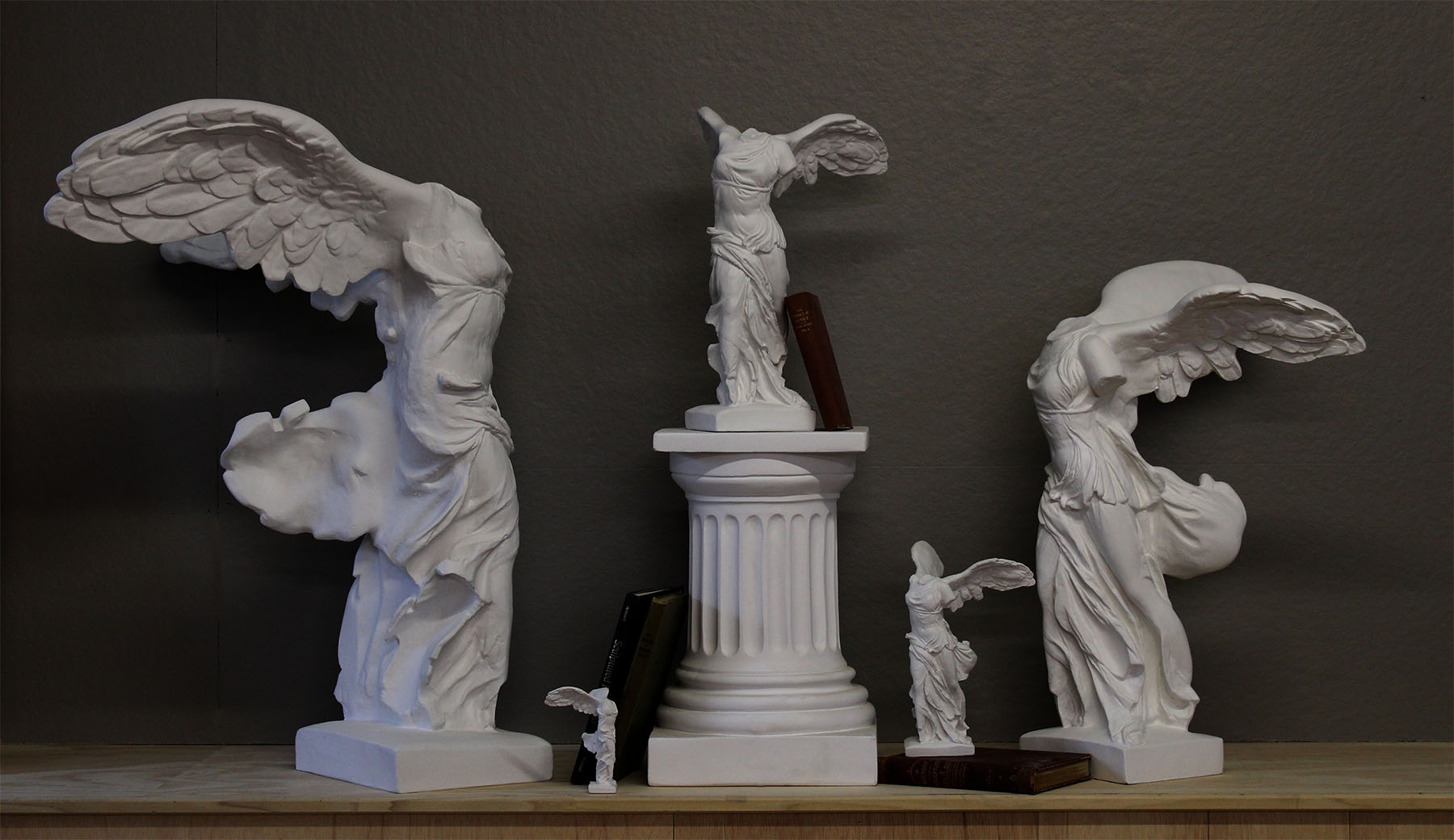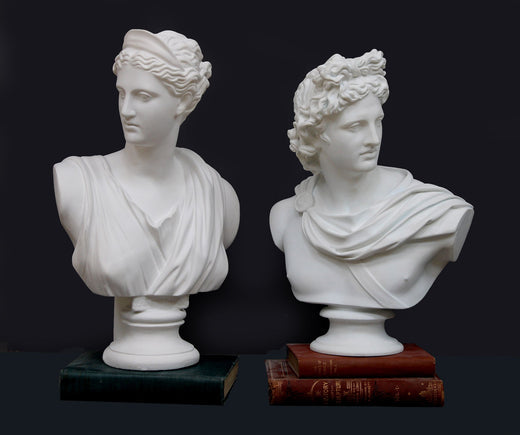Two companion scenes, etched in plaster, hung over the couch in my childhood home. Despite scrutinizing them daily, they took me years to interpret. One displayed hunters in a chariot, arms holding reins and bows, the horse jumping over a large lion who, I now know, is taking his last breath. Three arrows have landed in his mane and sides and his tail tucks under his legs. The other depicted a single lioness, back legs lame, also a victim of arrows.
I spent so much time staring at those carved images. Though they sound gruesome, I found them graceful, my young eyes abstracting the images. Despite the arrows, I didn’t identify the lone lioness as dying—instead I was transfixed by the elegant curve of her back and upraised jaw. The horse confounded me; at first I didn’t understand why it had three sets of legs and heads, but as I got older I realized there were three layered horses leading the chariot. The horses appeared to be floating over the lion rather than jumping, and the archaic use of space and dimensions held a complicated genius.
Years later, I made a pilgrimage to the British Museum in London, heading straight to the Assyrian art section. I wandered slowly, my eyes touching every worn angle and crumbled stone scene. My heart quickened—there it is. The coloration was slightly different, but it was the Dying Lioness I’d spent so much time staring at during my childhood. Instead of a single two-by-three-foot plaque, she was surrounded by other stone illustrations from the hunt, taking up my entire field of view. Lions flee, and ultimately cannot escape the arrows. Horses and chariots, similar to the triple-legged oddity I grew up with, pursue the many proud felines. Seeing the sheer number of lions and lionesses fleeing added to the drama of the scene.
If I had to introduce myself to the lioness at that moment, my mouth would’ve been stuck, tongue-tied with awe, as if meeting a celebrity. I would’ve been lucky to muster a solid, “Hello, I’m a big fan of yours. I've always wanted to meet you.”
I collected myself and stood, eyes attempting to bring in as much detail as possible. “Are you who I think you are?” I asked. I had gotten to know that lioness intimately, and so came upon her with both recognition and curiosity. I’ve observed that the average museum-goer looks at a piece of art for about thirty seconds—thirty seconds! “Hurry up, it closes in 15 minutes and there are 100,000 works of art to see!" is how Clark Griswold in National Lampoon’s European Vacation sums up the feeling as his family tiredly ascends the steps of the Louvre. But I had spent hours pouring over that one piece: analyzing, wondering, and imagining.
I've had a lifelong relationship with sculpture—one that allowed me to grow up close to this piece and many others. In the 1990s my parents, Robert and Kathleen Shure, acquired the Giust Gallery, a continuation of the Caproni Collection, which is based on over 100 years of history. As many of you probably know, this Collection came into existence when Pietro Caproni took molds off sculptures all over Europe over a century ago (when that sort of thing was still permitted!). He then sold the reproductions to people around the world. Over generations, the Collection changed hands and owners many times, eventually finding itself under my family's care. As a child interested in sculpture, I had access to the ultimate library. Whenever I needed ideas or inspiration I would sketch or study one of the pieces in the Gallery. I would bike there after school, and the people at the studio—as well as the art pieces—became part of my extended family: uncles and aunts in both flesh and plaster.
Over the last century, many items were lost or destroyed. Slowly, my family has been adding them back into the Collection. The 1911 Caproni Catalogue had thousands of items for sale and we currently list over 500 available for sale and many more in our collection to be added once the molds-in-progress are completed. As the next steward in line to care for the Collection, I hope, with the help of others here, to continue its preservation and re-complete it while making it accessible to the modern age. Who knows how new technology will influence the casts’ impact? The collection of pieces with their layered history—like the layered horses in the Assyrian hunting scenes—has potential to keep art, culture and craft alive in a changing world and allows children to be able to study a single piece for hours, just as I did.
When I welcome first-time visitors into the Gallery, most people gasp and say how much it reminds them of their trips to Europe. I smile inside, thinking that trips to Europe have reminded me of, well… home.
Wouldn’t we all love to experience a little of that?
Warm regards,Lisa Benson
Want content like this delivered to your inbox? Sign up for our newsletter!




Comments
Hi Larry,
Thanks so much for your comment! It was definitely the trip of a lifetime!
-Lisa
Lisa: Great piece, very inspiring. Was just at the British Museum in January and saw both of these pieces, along with so many others. We acquired a reproduction of the chariot hunt from Giust Gallery in 1990, so it was especially wonderful to see the original in London. Everyone should visit that museum to experience the awe and wonderment. Best, Larry